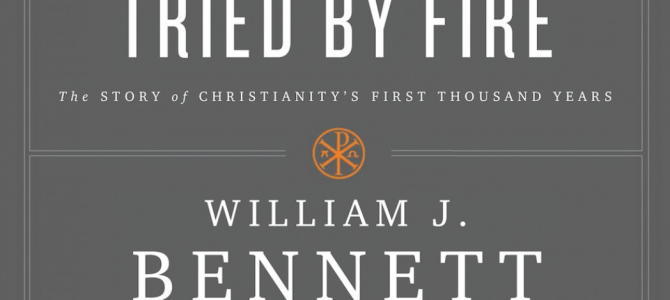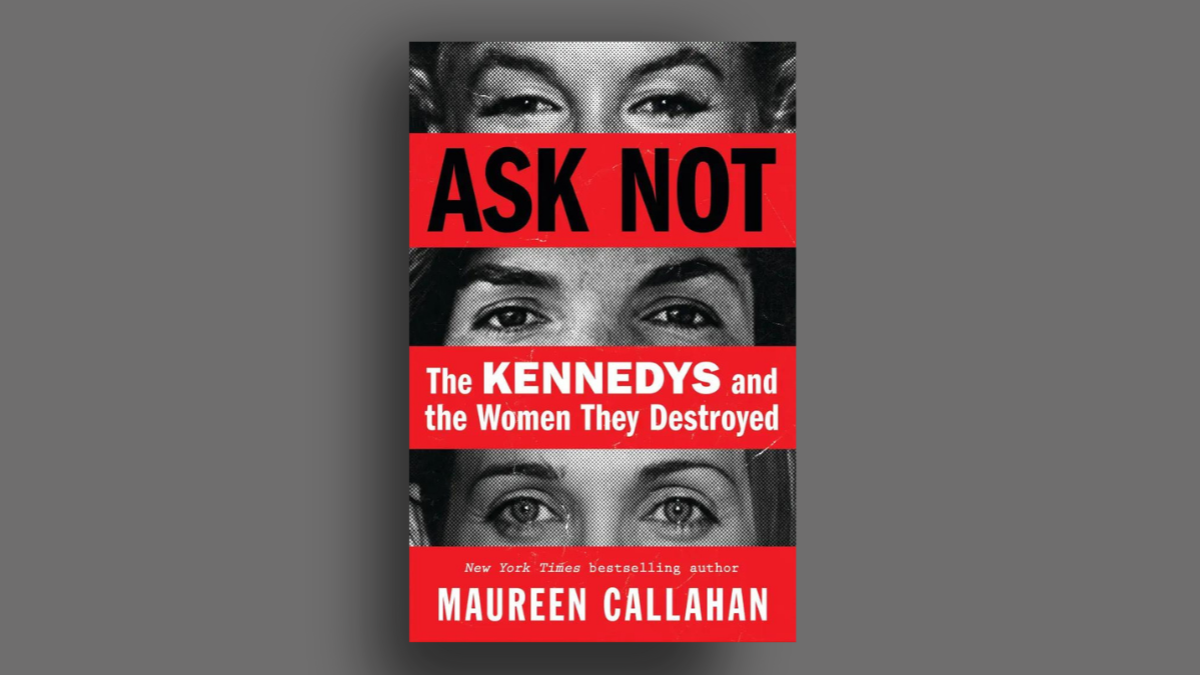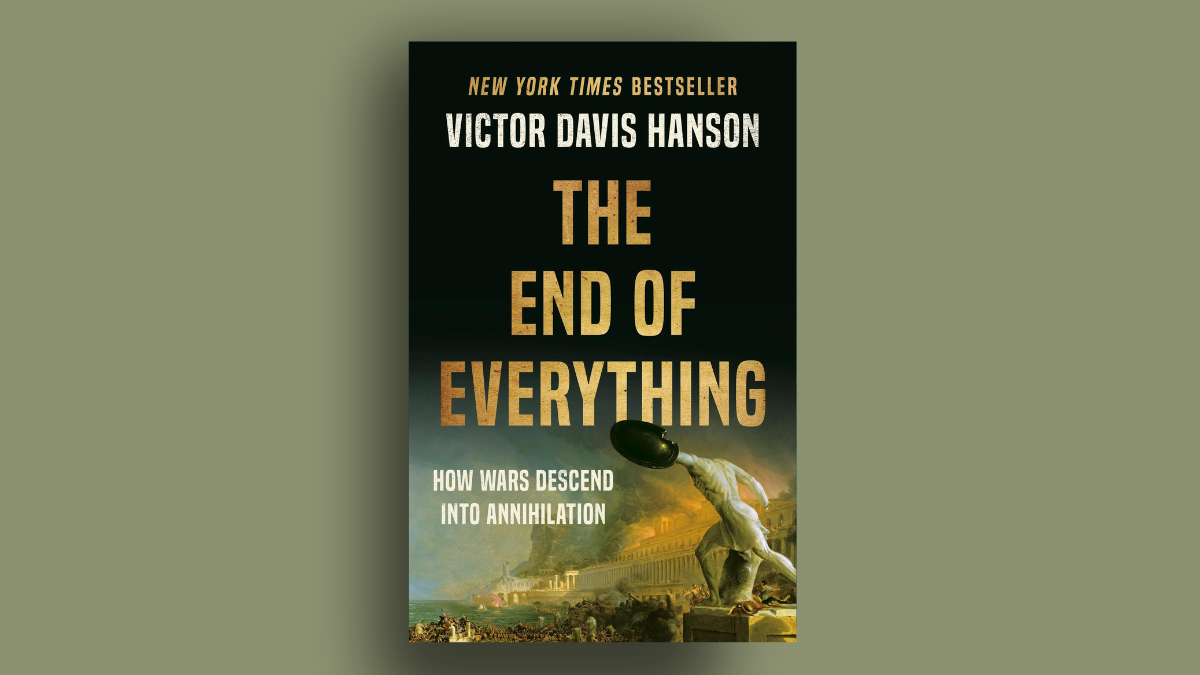
Lions have torn them limb from limb. Snakes have been forced down their throats. Some were disemboweled. Others were strangled, starved to death, or burned at the stake.
And they sought glory in these untimely ends: when death by asphyxiation wasn’t enough, they asked to be crucified upside down.
For Christians in the ancient world, the Way of Life often led to a bloody death, and conservative leader William J. Bennett resurrects the stories of these saints, sinners, and martyrs in Tried by Fire, a biography of the first thousand years of Christianity.
Bennett has been a trusted voice for a largely conservative Christian audience for more than 30 years. The former secretary of education under Ronald Reagan and host of the talk radio show “Morning in America,” Bennett has championed American patriotism and traditional values in more than 25 books, including America: The Last Best Hope, a three-volume narrative history written to inspire “informed patriotism,” and his wildly popular Book of Virtues, which was viewed as a McGuffey’s Reader for the 1990s.
Now Bennett moves from the disciplines of history and morality to the realm of faith. With its accessible writing style and colorful anecdotes about the lives—and gruesome deaths—of Christian saints, Tried by Fire is billed on Bennett’s website as a story of “Persecution. Death. Redemption.”
Between Faith And Bloodlust
Bennett’s history opens with Rome in flames as the emperor Nero frames a young Christian community with arson and sets off the first state attack on the church in A.D. 64. Bennett’s first hero is the apostle Paul, a former enemy of the church whose conversion spurred the worldwide spread of Christianity and eventually brought him to martyrdom under Nero’s command.
In an interview with Fox News, Bennett framed his history as an encouragement to those who suffer persecution today, echoing a quotation from the early church father Tertullian: “The blood of the martyrs is the seed of the church.”
From the first Christians’ bloody precedent, a train of martyrs followed: Ignatius carried the torch of the apostles’ work by writing, preaching, and being torn to pieces by lions. Perpetua left behind a young child in favor of mauling by wild beasts. Justin Martyr earned his surname by losing his head.
As the fire of faith spread across the Roman empire, rulers were not always actively belligerent toward Christians, but tensions between a brave new religion and its secular authorities meant that the world was often on the offensive against the church.
Yet the church thrived under the sword; as casualties mounted, the saints rejoiced with a fervor for martyrdom that strikes a fragile balance between bold faith and bloodlust.
Early Christians’ thirst for martyrdom would seem hyperbolic if Bennett had not included eyewitness accounts of many martyrs’ deaths. A shining example is Perpetua, one of the most venerated martyrs in the history of the church, who stabbed herself in the neck with a guard’s sword when her executioner delayed at sending her to her eternal reward.
From History to Legend
Stories of martyrdom have grown as they inspired Christians throughout the ages, and Bennett acknowledges that some accounts of the saints owe more to folklore than to fact. Thus, he treads lightly in the footsteps of historians such as Eusebius and Tacitus as he recounts potentially apocryphal church traditions.
Regardless of factual veracity, though, the legacy of the age was one of holy martyrdom, and the lasting popularity of these stories shows the power of the Christian theme of self-sacrifice in the early church.
As he balances history and hagiography, Bennett’s account of an early church “Tried by Fire” is a convincing one, as the Christian faith gained power and influence in spite of—or perhaps inspired by—persecution.
But one wonders how the book’s fiery title will bear up in the latter half of this history, after the young church gained power and took up the sword for itself. Although Bennett aims for objectivity in a history that cuts across multiple faith traditions, his slogan of “persecution, death, and redemption” threatens to turn on itself when theological and political controversies explode into violence from within the newly powerful church.
Political Christianity
As he chronicles this uneasy relationship between the sacred and the secular, Bennett turns to another question from Tertullian: “What hath Athens to do with Jerusalem?”
At first, the answer seemed to be, “As little as possible.” But the rise of Constantine around A.D. 300 marked a turning point in the church’s response to this question. After a vision of Christ led him to victory in battle, the Roman emperor made Christianity legal for the first time in its history.
This political endorsement of Christianity was both a blessing and a curse. Though the emperor supported mission work and encouraged church unity, his influence at the Council of Nicaea was proof that the state was now claiming power over men’s souls.
The church soon entered a round of duels in a grand contest of loyalties between church and state. Bennett’s tale of embattled Christians becomes increasingly complicated as Christians do much of the battling themselves, and the church divides between Arians and Nicaeans, Easterners and Westerners, politicians and priests.
Bennett gives readers a brief, informative introduction to important figures in the Middle Ages. Bennett leads readers through the lives of leaders who attempted to settle the convoluted theological and political controversies of their time: Pope Leo I and Pope Gregory the Great supported sound doctrine and brought the gospel to non-Christians, with varying degrees of success and conflict with leaders of the Eastern church in Constantinople. The Eastern ruler Justinian’s attempts to spread Christianity through both church and state led to violence against heretics and expensive church improvement campaigns that impoverished his empire.
Charlemagne, the great jolly scholar and Christian king of the Franks, was crowned “holy Roman emperor” by Pope Leo III, causing confusion about the pope’s support for an earthly ruler, especially one that seemed to favor the West over the East.
This political controversy shows hints of simmering doctrinal tensions, as well. Arguments over papal succession, the celebration of church holidays, and the nature of the Trinity had been causing friction for years, and they would eventually fracture the church in the Great Schism of 1054.
Saints And Sinners
In light of this political and theological turmoil, a black-and-white division between saints and sinners is impossible, and Bennett attempts to retain objectivity while sketching a hopeful, comprehensible interpretation of church struggles for his Christian audience.
In his efforts to reserve judgment, Bennett often resorts to pity: violence instigated by Christians is repeatedly deemed “unfortunate.” Analysis of Christian rulers’ motives leads to speculation over the sincerity of their faith. Though this tentative moral compass may give direction to a tumultuous narrative, Bennett need not have worried about assigning praise and blame to his subjects. These sinners and saints speak for themselves.
Tried by Fire shines in its frequent first-person testimonies from Christians who devoted their hearts and lives to their religion. Readers understand martyrdom not through Bennett’s incendiary slogans, but through Justin Martyr’s fearless defense of his faith: “We hope to suffer torment for the sake of our Lord Jesus Christ, and so be saved.”
Augustine’s prayer illuminates the peace felt by followers of Christ: “You have made us for yourself, O Lord, and our hearts are restless until they rest in you.”
A monk named Leontinus justifies the divisive iconoclast controversy with his confession: “We Christians, by bodily kissing an icon of Christ . . . are in spirit kissing Christ Himself or His martyr.”
The Great Schism
“Tried by Fire” ends, abruptly but appropriately given its fiery narrative, with the eruption of hundreds of years of tensions between the Eastern and Western churches in the Great Schism of 1054.
Although the fierce convictions and unswerving faith of early Christians sparked this explosion, the conflicting doctrines that split the church were evidence of the saints’ certainty that the truth is worth a battle.
Bennett’s biography of Christianity shows that the story of persecution is more complicated than his slogan suggests. Though the book’s conclusion points to current Christian persecution in Africa and the Middle East, readers should remember that persecution has taken different forms, both from within and from without the church. Still, this mixed history is exactly why martyrs’ stories are worth telling.
Christians have long cast their own story as one of perseverance against evil in its many forms, and Tried By Fire provides compelling testimony that the history of the early church is relevant to us today. For Justin Martyr in the second century, the Christian faith was stronger than earthly power: “If we looked for a human kingdom, we should also deny our Christ . . . But since our thoughts are not fixed on the present, we are not concerned when men cut us off.”
To remind us the history of the church still still bears witness to eternal truths, Bennett quotes a bishop in Nigeria who bore witness to this same faith nearly 2,000 years later: “You can kill people but you can’t kill the church.”









